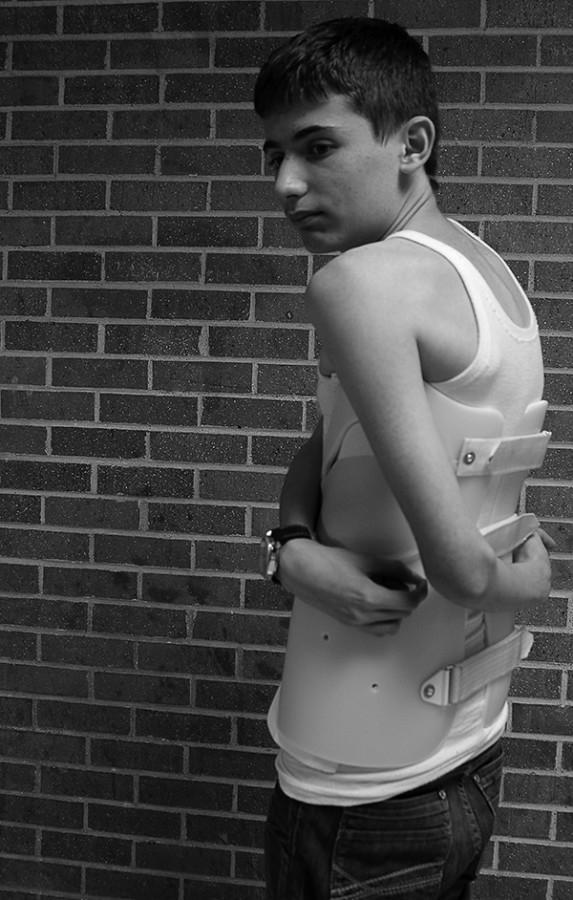Worry heightens as student awaits medical results
November 3, 2015
His stepmother snipped off the one thing that brought him comfort, because the X-ray would not read with the interference. A simple necklace, given by his stepmother, a symbol for the comfortable life that had been. A couple hours later, his doctor walked in with a grim look on his face.
This past July, junior Nathan Cassity was diagnosed with scoliosis, a sideways curvature of the spine that causes his ribcage to curve outward. Cassity does not know the specific cause of his condition, but it is most likely Marfan’s Syndrome, a rare disorder of the body’s connective tissue that has no cure.
“When I [learned] I had [scoliosis] I was surprised,” Cassity said. “I didn’t, and still don’t have any pain or discomfort. Even without Marfan’s, my spine can continue to arch outward and puncture one of my organs.”
Cassity will have to wear a brace to correct the misalignment of his chest, shoulder blades and spine. He will start wearing the brace for just an hour every day, gradually increasing the wearing time for six months, until he is wearing it for at least 23 hours a day.
“The brace will be covering my entire chest and back,” Cassity said. “I’ll have to wear it [for] either six months to a year, or possibly two years. [Over time], I think I’ll just get used to [the brace].”
Cassity said he has to wear the brace every single day, without exception, or he risks worsening his scoliosis. He said that willing himself to put the brace on will be the hardest part.
“I won’t be able to put it on and take it off by myself,” Cassity said. “I have to have someone help me. That will complicate things.”
Cassity said he found comfort in knowing the brace will be hidden. He said the brace will not affect his self-esteem; he just sees it as another add-on.
“It’s similar to getting braces on your teeth,” Cassity said. “No big deal.”
When he told others of his condition, Cassity received mixed responses.
“My family is worried − they constantly check up on me − but I’m not,” Cassity said. “My friends aren’t that worried, which I’m really happy about. They weren’t really shocked about it at all, they just accepted it.”
Before he received his brace, Cassity said that the brace will not affect his future as long as the process works. If it turns out he does have Marfan’s Syndrome, he said he will get through it day by day, even if he had to have constant medical care for the rest of his life.
“[I now know] how easy it is for your life to change in an instant,” Cassity said. “But, it’s just a condition, it’s not a death sentence, not a traumatizing event that [will] scar you forever, it can go away. [If it doesn’t go away], I can handle it.”
Cassity’s tone changed on Oct. 12 when he tested for Marfan’s Syndrome and received his brace. After actually getting the brace, reality hit, and he is now overwhelmed at the possibility of testing positive for Marfan’s. Cassity is still awaiting a call from his doctor to receive the results.
“At first, I thought it wasn’t that big of a deal,” Cassity said. “Now that [I have the brace], I’m worried. I don’t know what’s going to happen to me.”


